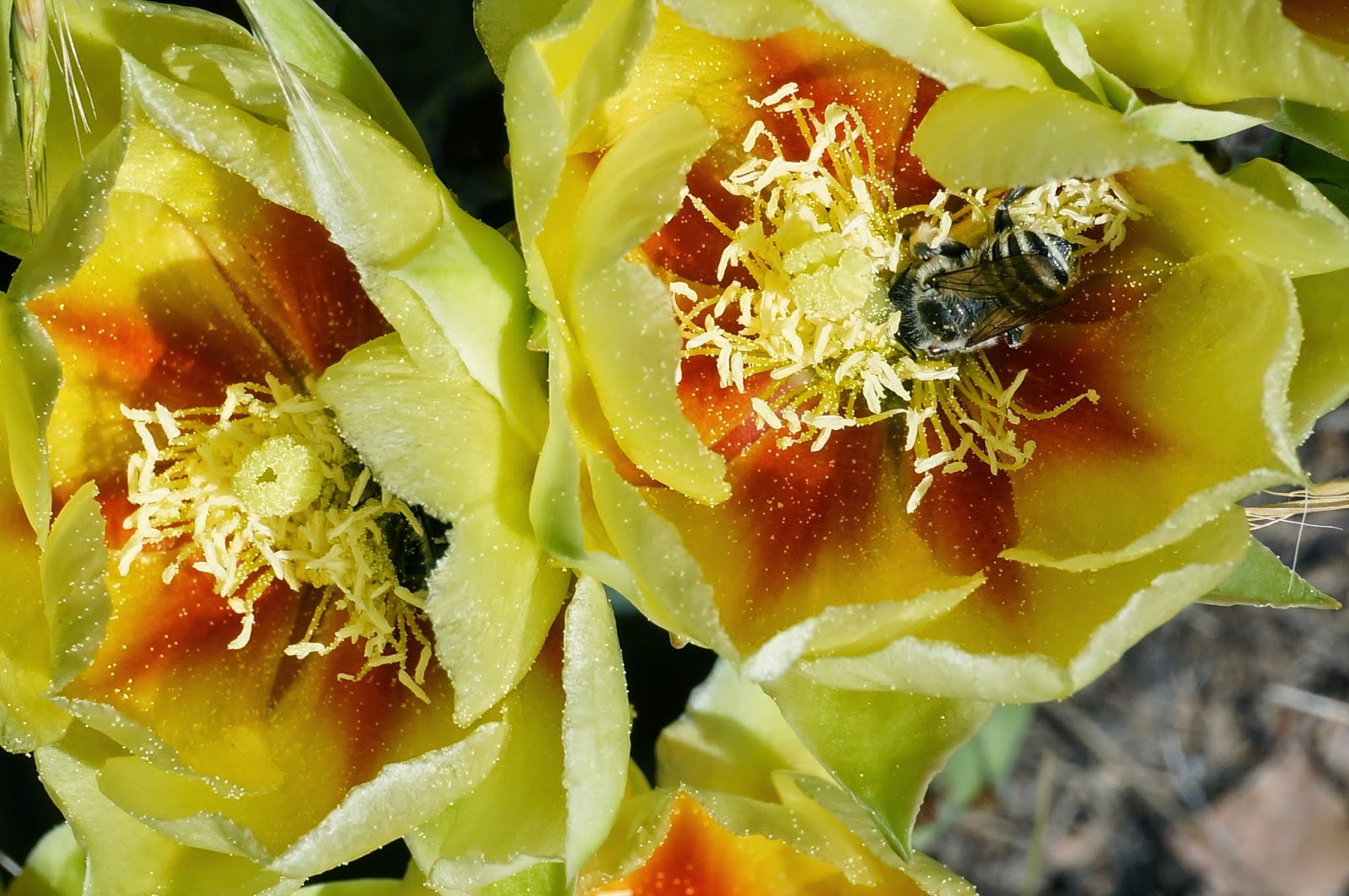Hymenoptera (ants, bees, wasps) are second only to beetles
for insect diversity in North America. Most people recognize honey bees and bumble bees, the two
common social bee families, but that is only the beginning. In fact, most bees have
neither hives nor queens. The majority of bees live solitary lives. Instead of hives, they excavate nests
in dirt or dead wood. These
self-sufficient little creatures have unique habits which, when combined with
their big eyes and fuzzy bodies (the 'cute' factor), make them intriguing
objects of study.
Megachile spp. (brevis?) says: "What're you looking at?"
Their small size and high diversity can make them difficult
to identify to species without magnification in a lab setting. However, I have convinced
myself that I got at least two bees to genus on a prickly pear (Opuntia spp) blossom last Saturday.
When getting a rough ID of a bee on the fly, there are a
number of traits to consider. Things like behavior (posture, vocalizations,
choice of food), body shape, placement of fuzzy bands, placement of scopa
(pollen collecting hairs), and coloration are all good characteristics to
remember.
Megachile spp. and crab spider on Opuntia (prickly pear)
blossom
Keeping this in mind, I decided that two of the bees I observed
fussing over the cactus flowers were in the Diadasia
and Megachile genus, respectively. Megachilids (commonly referred to as
'leaf-cutter' bees for their habit of excising semicircular patches from leaves
to furnish their nests) are easy to spot. They have relatively large
bobble-heads for their size, make a high-pitched humming noise, and, most
distinctively, collect pollen on their bellies instead of their legs. They
forage with a 'bottoms-up' posture that looks a little goofy on the flower.
Megachile "bottoms up!" pose
Diadasia can be a
little more challenging. To the relatively untrained eye (i.e., mine), Diadasia resemble Melissodes. Both are medium-sized fuzzy bees with large scopa on
their hind legs. The differences are in the details. Diadasia are overall a bit fuzzier, and they have round
foreheads (vertices) instead of a flattened vertex like the Melissodes bees. The final factor that
hinted "Diadasia" was that
this bee was observed on a cactus.
Confirmed as Diadasia
australis on BugGuide.com by Dr. John S. Ascher
Diadasia are one
of the many bees referred to as 'cactus bees'. All sorts of bees love cactus, but Diadasia species are often classified as 'oligoleges' (think oligo-
few), that is, they specialize on a few sources of pollen. A number of Diadasia have a special affection for
cactus flowers. While many Diadasia
love cacti, they do feed on other flowers. Oligoleges tend to be more
particular about the pollen they collect than the nectar they sip. Another common name for Diadasia is
"chimney bee". They build turrets around the entrance to their nests
in the ground. I didn't find this little lady's nest, but if you see a tunnel
with a turret, you'll know a Diadasia might
be calling that nest home.
One last thing to know about the vast body of bees: despite
the fact that you can see I totally got up in their
faces, these native bees didn't so much as buzz me. Most bees rarely sting.
This is doubly true for solitary bees without a hive to defend.




Great pics, cool info. :)
ReplyDelete